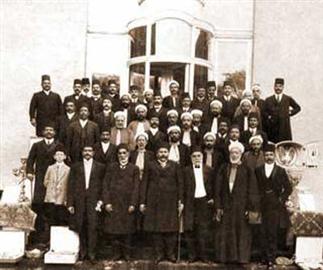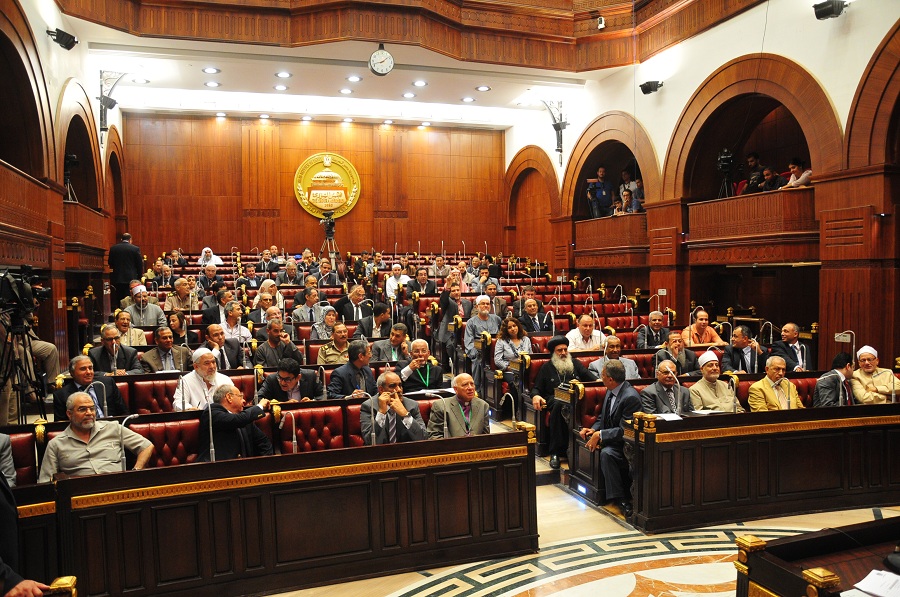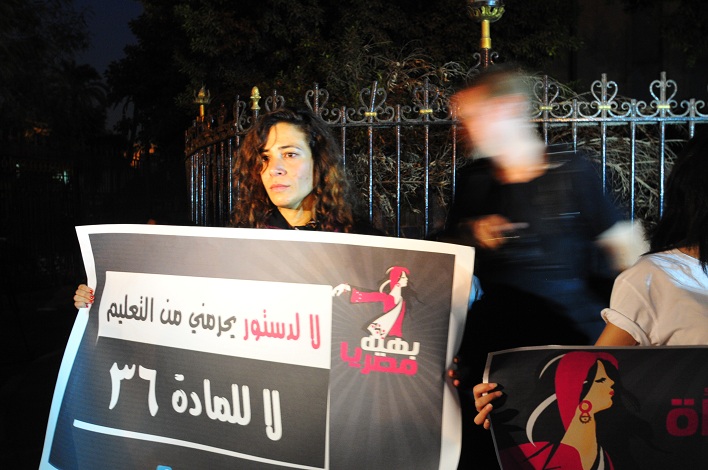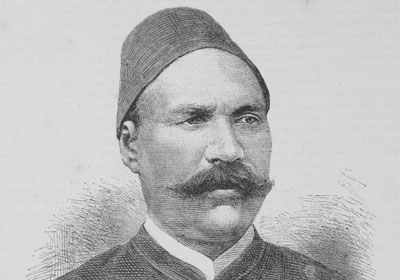
Archive
Despite the alluring simplicity of the popular “Bread, freedom, social justice and human dignity,” slogan from the 25 January 2011 revolution, it seems Egyptians cannot agree on the next political steps. Almost two years later, Egyptians are still debating their first constitution in post-revolutionary Egypt. After the opposition boycotted the first draft of the constitution, numerous media attacks, more than 40 lawsuits, and criticisms of its lack of diverse representation, the Constituent Assembly is trying to finalise the published draft of the constitution and get it passed. All pointers indicate that the draft is too weak and flawed to withstand the waves of criticism.
The Constituent Assembly is the biggest in Egypt’s history. The assembly of the 1923 constitution was composed of just 30 members, among which Bedouins, Sufis, Jews, and Christians were represented. The 1954 assembly was made up of about 50 members and the 1971 assembly was constituted of 80 members. However, it is not just the number of constituency assembly members that distinguishes the current draft. The curious reader will also notice a comparative difference in the choice of words and sentence structures, exhibiting the current assembly’s lack of legal knowledge.
Egypt’s constitutions in history
Egypt’s constitutional experience started in the 17th century. Under Muhammed Ali Pasha, Egypt had its first constitution laid out in a document called the Siyasitname (a Turkish word for a list of bylaws). This document allowed for the establishment of some representative councils known as dawaween, but it was never a fully fledged constitution in the contemporary sense of the word. In 1866 under Khedive Ismail, the first real representative council was established and its bylaws were gifted from the Khedive, so they did not impose a real obligation on the government. Still, the bylaws of 1866 were a step towards devolving governance in Egypt away from the autocratic hands of a single ruler.
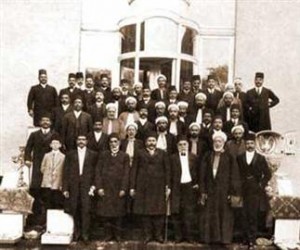
Archive
In 1882, one of the demands of the Orabi Revolt (a revolt against Khedive Tawfik and foreign domination) was to allow for a constitutional document, and it paved the way for the 1923 constitution.
The 1923 constitution was the first real constitution Egypt knew. It was the model for the eight Egyptian constitutions that followed. It came out of the 1919 revolution under the leadership of Saad Zaghloul, known at the time as the “the leader of the nation.” The 1923 constitution gave much power to the king, but empowered the Egyptian public to a limited extent. Due to the many violations of the constitution by the government, political parties and the king, it was annulled in 1930 and a new constitution was drafted that same year.
The 1930 constitution marked the beginning of a difficult period for the enfranchisement of the Egyptian people, as it discriminated against the citizenry in electing their representatives. Article 81 stated that voters had to own a specific amount of money to vote. These and other defects fed so much discontent that the 1930 constitution was invalidated in 1935 and Egypt revived the 1923 constitution, which remained valid until the 1952 coup d’état.
The coup d’état of 1952 finished the monarchy. The ensuing Nasserite period witnessed a myriad of temporary constitutions and constitutional declarations. A committee was formed to draft a constitution straight after the coup. This committee had some of Egypt’s best thinkers and intellectuals including Taha Hussien (the dean of Arabic literature), Ahmed Lotfi El Sayed and FekriAbaza. The committee drafted the 1954 constitution as a progressive document by emphasising civil liberties, labour rights and social justice. However, the draft was rejected by the Revolutionary Council of 1952 and replaced with the constitution of 1956.
The constitution of 1956 did not last for long. Two years later, Egypt and Syria joined a union known as the United Arab Republic (UAR) and a temporary constitution was drafted in 1958. This constitution was soon annulled and two were passed in 1962, one for Egypt and one for Syria. However, the union failed in 1964, and that’s when Egypt drafted another temporary constitution.
Finally in 1971, after the death of Gamal Abdel Nasser the year before, Egypt gained a permanent constitution. The new constitution clearly empowered the president of Egypt as well as granting more rights to Egyptians. Nearly a decade later, President Anwar Sadat passed a major amendment. The amendment had three significant changes. The first was in Article 2 changing “Islamic Shari’a as a source of legislation” to “Islamic Shari’a as the main source of legislation.” The second was in Article 77 changing “another presidential term” to “other presidential terms.” The third was establishing the Upper house, the Shura council.
As for Mubarak, he passed the 2005 amendments which launched the first presidential elections in Egypt’s history, deployed as a way to co-opt or neutralise the protesting opposition movements. The last straw was the 2007 amendments that increased the powers of the president by adding articles on counter-terrorism, namely Article 179 that allows the president to transfer any defendant to any court for crimes of terrorism.
Many aspects of this constitutional history deserve the attention of the Egyptian public, politicians and decision makers because there are many lessons to learn from, mistakes to avoid and shortcomings to compensate for. The following provides an examination of these constitutions and compares them with the current draft.
Civil Liberties in Egypt’s constitutions
A common theme that spreads throughout Egypt’s constitutions is the fact that civil liberties have not carried much value outside of written documents.
The 1923 constitution spoke of the equality of Egyptians before the law and the possession of civil and political rights without discrimination due to language, religion or ethnic origin. It emphasised that the freedom of creed is absolute and that the state protects the freedom of religions according to traditions in Egypt, without disrupting public order or morality. Exceptions and conditions, such as in the case of a threat to public order, were passed down from one constitution to another. These conditions left the door open for a government crackdown on liberties.
It granted individuals personal freedom, asserted the privacy of houses, property, telegraphs, letters and phone calls and forbade the confiscation of money. It also mandated primary education, which the rejected constitution of 1954 would have extended to university level at no cost to the student.
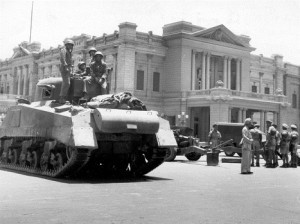
Archive
Though civil liberties were prominent in the 1954 constitution, the Nasserite era is known to be the worst period for the persecution of individuals by the regime. The constitution of 1954 provided protection for individuals from surveillance without a warrant and prevented civilians from being tried before military courts or special tribunals. It granted Egyptians the right to establish syndicates and form associations and parties for peaceful purposes. This right was palpably violated in Nasser’s era by the crackdown on most political parties and groups, which explains why the constitution of 1954 never saw the light of day.
It guaranteed individuals the right to hold peaceful processions or demonstrations and labour’s right to strike. The latter has been limited by the today’s draft which reads “striking is a right regulated by the law.” This could be interpreted as another restriction on worker’s rights.
As for the 1971 constitution, although it asserted social and health care services, it mentioned nothing about the responsibility of the state to build hospitals or open clinics. It declared personal freedom is a “natural” right, inviolable except in cases of flagrante delicto (when the person is caught red-handed).
It emphasised that protection of the environment and eradicating illiteracy are national duties and that safeguarding national unity and maintaining the state’s secrets are both societal responsibilities. But, it did not mention the consequences of violating a “national duty” or a “social responsibility” which renders such articles essentially rhetorical.
The additions the current draft has made to civil liberties are found in the freedoms, duties, and rights chapter. The very first article values human dignity, but the second part of it emphasises that no individual should be insulted. This could be interpreted to restrain political, religious or any other figures from practicing their freedom of speech. It affirmed the right to practise sports, own health insurance, housing, clean water, healthy nutrition, and clothing.
It has also added some unprecedented articles such as Article 67, on a child’s right to a suitable name, familial care, housing, and nutrition and health services. The article makes it illegal for children to be employed as long as they are at the age of mandatory education, but without specifying that age, again leaving the door open for misinterpretations.
Another article obliges the state to improve the societal culture towards disabled people, provide them with jobs and prepare public facilities to suit their needs.
Article 41 granted freedom to access information, statistics, and documents except if they endangered national security or violated privacy. Again the exception of national security could be used very loosely by the state to block information from citizens.
Finally, the controversial article granting freedom to build houses of worship for the “heavenly” religions (the Abrahamic religions of Judaism, Christianity and Islam) and the article that forbids insulting prophets raises problems for the Baha’i and Shi’a communities. The former are not recognised as a “heavenly” religion so they would not be able to practice their rituals, the latter are recognised as Muslims, but still face infringement of their rights.
The current draft has dedicated more than 50 articles to freedoms, duties and rights, but it has fudged many articles that could empower Egyptian citizens.
Women in Egypt’s constitutions
Women were not mentioned in the 1923 constitution, except once concerning the provision of education for both boys and girls at the primary level. This was a setback to women, but responsibility movement gained momentum to achieve women’s rights and to be recognised by the law. Women reaped the fruit of their efforts in the 1954 and succeeding constitutions.
The 1954 constitution allowed women to vote for the first time. It mandated that the law should regulate working conditions for women and children and the state should establish institutions to facilitate women’s work and housework.
Article 62 of the 1971 constitution endorsed women’s participation in parliamentary elections without designating a percentage or number. This was progress, but it was not implemented until the women’s movement pushed for a quota, which the Mubarak regime allowed to appease both political movements in Egypt and critics abroad.
Article 11 of the 1954 constitution required the state to equate women with men in all fields of life, without violating the rulings of Islamic Shari’a. Although Article 11 was not controversial before the 2011 revolution, a heated debate started when it was adopted into the current draft as Article 68. The justifications for rejecting the provisions contained in Article 11 stem from the lack of a unified interpretation of Shari’a, which may endanger the gains women achieved during the Mubarak era.
Another significant passage in the current draft is article 71 which forbids slavery, forced labour, the sex trade, and the violation of women’s and children’s rights. Critics of this article raised the question of why not include violence against women and human trafficking.
President’s powers across constitutions
The 1923 constitution granted the king a list of powers that did not even exist in kingdoms elsewhere. The king’s character was protected and could not be insulted. He had the power to issue and ratify laws, dissolve the parliament unconditionally, postpone its meetings and appoint one fifth of it, as well as the Senate’s head. He had the right to appoint employees, ministers and officers (and dismiss them), issue currency, declare emergency law, and wars with the consent of the parliament. The parliament seems to have had minimal power compared to the king, leaving Egyptians at that time struggling with their king on one hand and British occupation on the other.
Similar to the 1923 constitution, which can be regarded as the king’s constitution, the 1954 constitution gave the president a lot of power, but with some checks and balances. First, the president had to be Egyptian and be born to Egyptian parents. Second, the president was elected by a committee of representatives, in addition to members of parliament. The law regulated the electoral process and the president was only allowed to serve for two terms of five years. The president had the right to dissolve the People’s House unconditionally once, after which it could only be dissolved after a popular referendum. Overall, the 1954 constitution empowered the president, but at the same time it developed other aspects of Egyptian life, such as the economy, worker’s rights, the role of the municipalities, and independence of judiciary.
The 1971 constitution furthered the powers of the president. Article 77 rose the duration of the presidential term from 5 to 6 years and the president was eligible to be re-elected for “other” terms. This article let Hosni Mubarak run for unlimited terms.
The president had the right to appoint ten members of the People’s House, issue or oppose laws, dissolve the parliament in case of extreme necessity, and declare emergency laws, but they had to be renewed with the approval of the People’s House. However, the fact that the majority of the People’s House was made up of the National Democratic Party (Mubarak’s party) meant it could renew emergency laws easily.
Finally, the amendments of 2007 to the 1971 constitution created a whole section on counter terrorism procedures through which the president could transfer any suspected terrorism case to any judicial institution. The Mubarak regime used this article, as well as the emergency law, to crackdown on opposition groups – particularly the Muslim Brotherhood.
Although the current draft was expected to take away many of the powers the president gained in the 1971 constitution, surprisingly it adds new ones. For the first time, the president has the right to appoint the members of the Supreme Constitutional Court. This is a breach of the principle of the separation of powers, as it mixes the executive with the judiciary. To make matters worse, it states that the president can appoint the heads of monitoring and independent institutions, after the approval of the majority of the Shura Council (Article 204). Again this gives a great deal power to the president and could allow corruption to go unnoticed.On the other hand, the draft brings down the presidential term to 4 years and the president can only be re-elected for one more term. Additionally, it requires a popular referendum for the renewal of emergency laws. This should protect citizens from arbitrary arrest, detention, and violence; two things they continuously faced under Mubarak.
The economy and taxes
The 1923 constitution was driven by political concerns, so it did not speak much of the economy. However, it specified that royal edicts could levy taxes that no one was excluded from. In contrast the 1954 constitution had its emphasis on the economy and workers’ rights. It aimed at establishing a state economy on the principles of social justice, developing production and raising living standards.
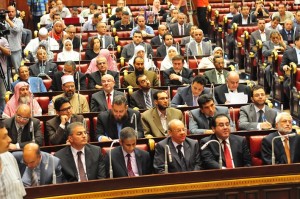
Hassan Ibrahim
It stated that workers should be compensated for their work by getting part of their production and that the state should provide a good standard of living based on good nutrition, housing, and health, cultural and social services. It asserted the importance of the state nationalisation, whereas both the 1971 constitution and the current draft make this conditional. Henceforth nationalisation would only be considered if it fulfilled the test of “for the sake of the general good.”
As for taxes, the 1954 constitution encouraged savings, supervision of credit and public savings. It exempted lower income brackets from taxes.When state management of the economy characteristic of the Nasser era ended, and Sadat initiated the “open door” policy of internal and foreign investment, the mixed economy approach was manifested in the constitution. The 1971 document declared the national economy was based on free economic activity as well as social justice, protection of ownership and preservation of workers’ right.
It stated that economic plans should seek to increase national income, lead to fair distribution, raise standards of living, eradicate unemployment, and create job opportunities. Like the current draft, it did not focus much on taxes and left them to be regulated by the law.
The current draft remains vague on the economy and taxes. Indeed, it specifies social justice, fair distribution and safeguarding the rights of workers as a guiding principle of the economy, but it does not mention the direction of the economic policies or what tax system should be implemented. Some argue that the place for tax systems is the law and not the constitution, but simply stating that social justice is the guiding principle is too ambiguous and leaves people with nothing tangible.
In this regard the 1954 constitution was the clearest on issues of the economy and workers’ rights, which correspond to Egypt’s economic socialist policies in that period.
The Armed Forces
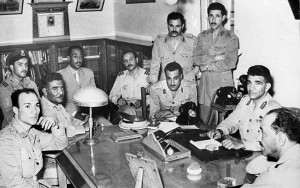
Archive
The three preceding constitutions and the current draft all emphasise the absolute importance and value of the Armed Forces. In contrast the 1923 constitution did not mention the military very much, it only highlighted that the law regulates conscription. Compared to the other three constitutions, the 1954 constitution had the longest section on the Armed forces. It asserted that only the state can have a monopoly over military power and that no other group can have armed or paramilitary forces. It also gave leave for the military to aid the civilian authorities when needed. This could have been interpreted as military involvement in the economy and building infrastructure.
The constitution of 1971 established the National Defence Council, which gave new powers to the president, as it was controlled by him. The only new aspect the current draft introduces when it comes to the Armed Forces is the emphasis that only military members and officials are subject to military trials and courts. This came as a response to the violations that took place after the January uprising, when more than 13,000 individuals had military trials. Significantly in all the four constitutions the budget of the military remained untouchable by civilian oversight.
*************
Reading, examining and evaluating Egypt’s three preceding constitutions, it can be seen that the values and concerns addressed in the constitutions were unique to each document. The monarch’s powers in the case of the 1923 constitution, social equality and labour rights in the case of the 1954 constitution and the president’s powers with regards to the 1971 constitutions. Egypt of 2012 remains a complex mix of political, military and social influences that are each seeking to mould the development of the post-revolutionary constitution. Whatever happens, the resulting document will still have to stand the test of time and be judged by future generations according to how well it serves the Egyptian people.
